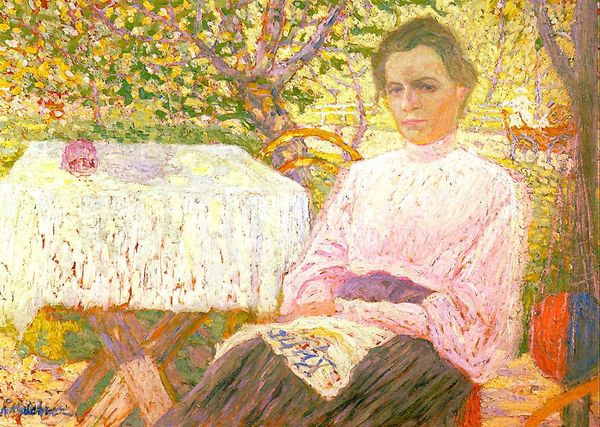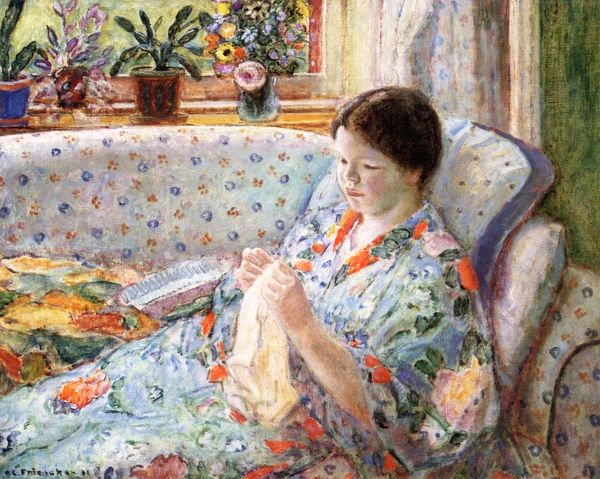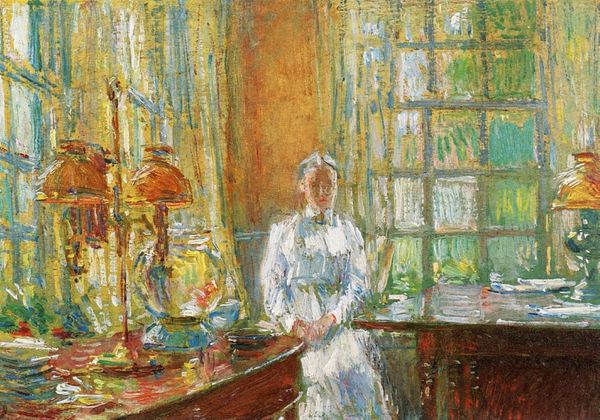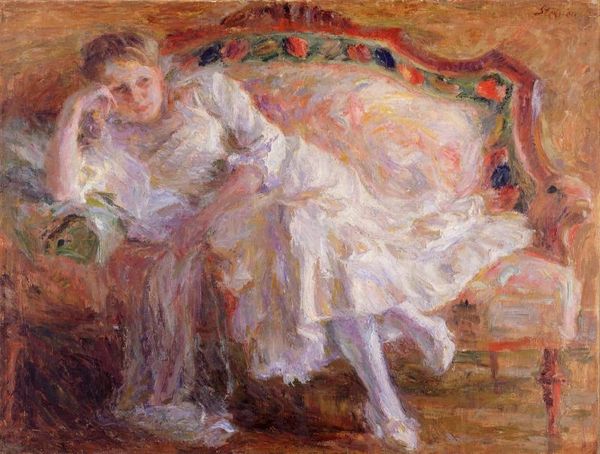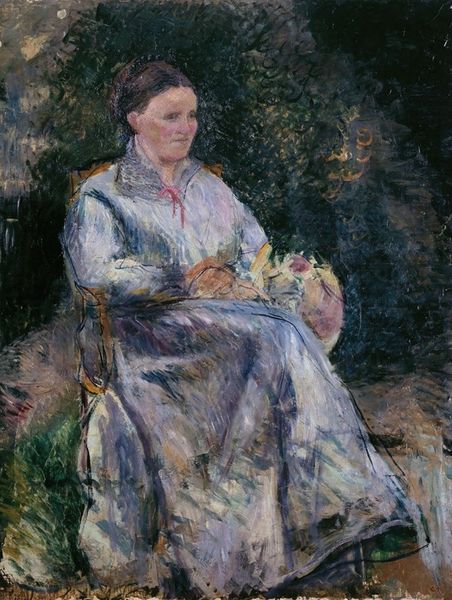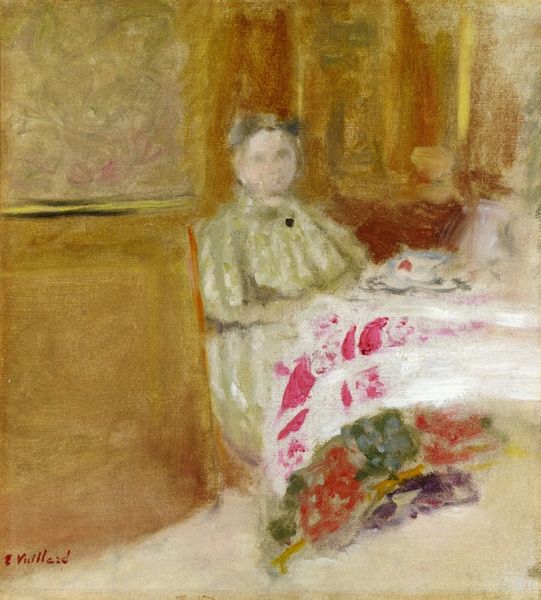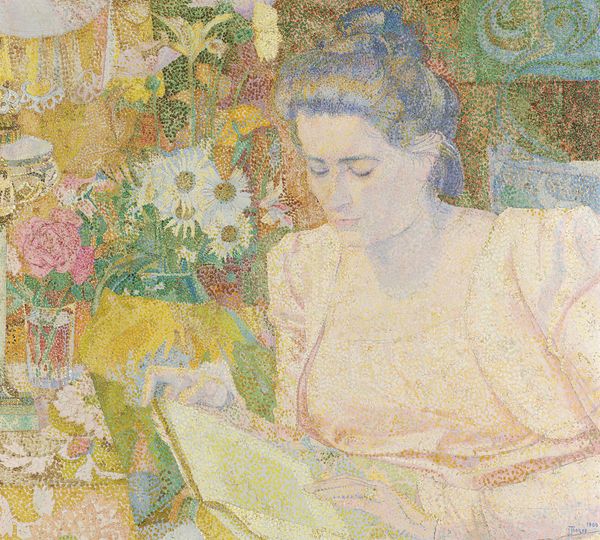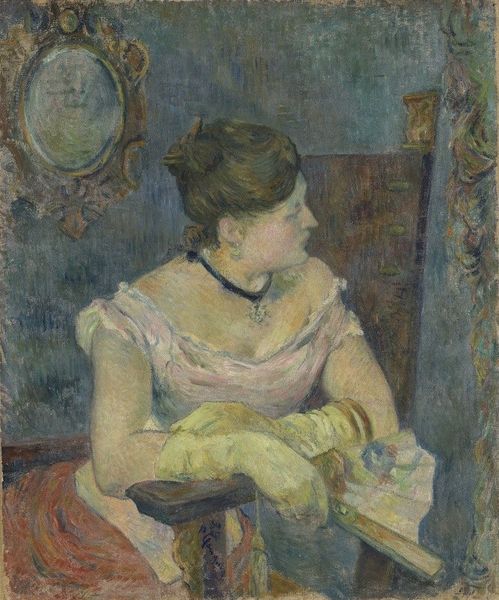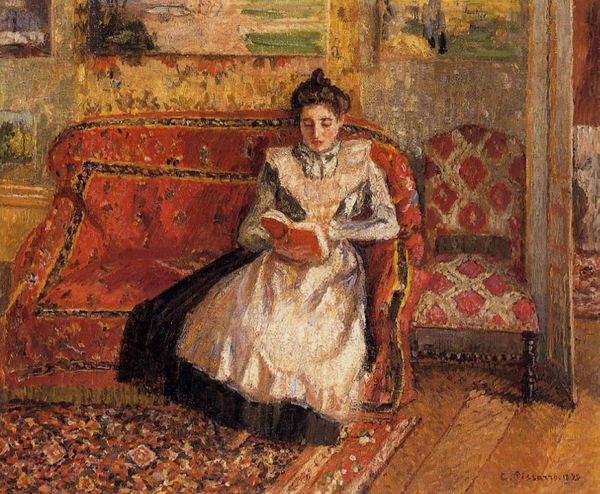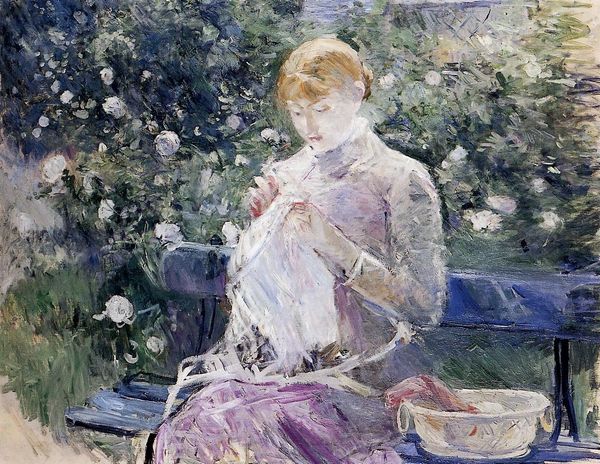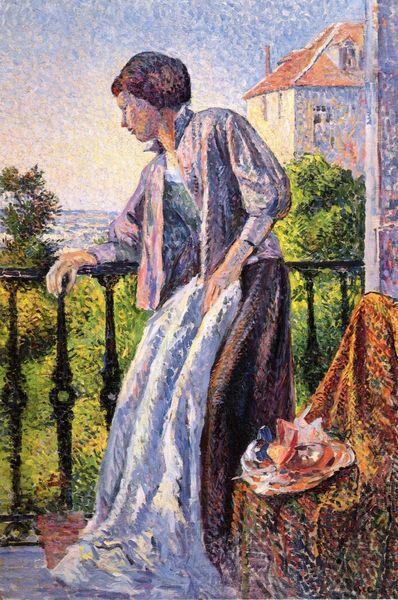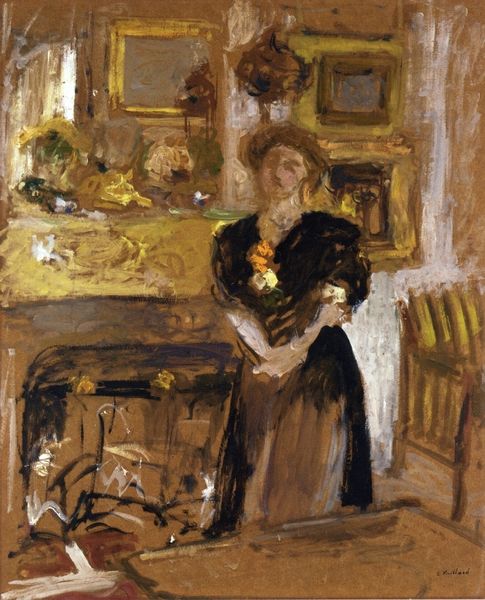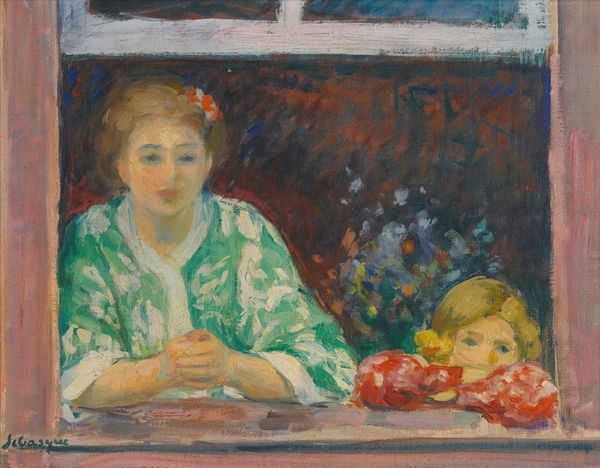
Dimensions: support: 610 x 505 mm
Copyright: CC-BY-NC-ND 4.0 DEED, Photo: Tate
Curator: Harold Gilman’s "The Artist’s Mother," now in the Tate Collections, presents a compelling study of familial representation. Editor: It's a dizzying composition! The patterned wallpaper and the sitter's dress almost merge, creating a unified, if somewhat claustrophobic, visual field. Curator: Gilman, working in the early 20th century, was deeply engaged with the social realities of his time. This portrait can be viewed as a meditation on aging and the domestic sphere. Editor: Notice how the impasto technique and restricted palette emphasize the textures and forms, flattening the space and highlighting the materiality of the paint itself. Curator: Indeed, and consider the implications of depicting his mother in such a specific, perhaps even confining, domestic setting, reflecting the limited roles often afforded to women of that era. Editor: A fascinating dance between form and content; Gilman's brushwork alone carries significant weight. Curator: A weight that speaks volumes about the complex relationships between artist, subject, and society. Editor: Precisely, and a testament to the power of paint to convey more than just a likeness.
Comments
tate 8 months ago
⋮
http://www.tate.org.uk/art/artworks/gilman-the-artists-mother-n05555
Join the conversation
Join millions of artists and users on Artera today and experience the ultimate creative platform.
tate 8 months ago
⋮
Gilman painted a series of portraits of his mother, to whom he was very close. This one was probably painted at the Rectory in Snargate, where his father was Vicar. The decorative wallpaper in the background is used by Gilman as a contrast to his painting of the figure, and such papers often feature prominently in his work. At the small art school he opened with Ginner in 1916, Gilman would habitually set models in front of a screen covered with boldly-patterned wallpaper. Gallery label, September 2004
